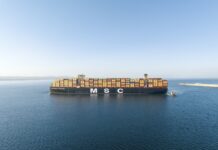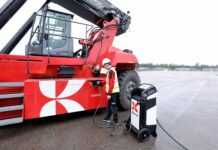
The Port of Duisburg (duisport) and VITRONIC, an industrial image processing company, developed a “Rivergate” based on high-resolution 12K cameras in 15 months and successfully tested it on two cranes in the German port.
This created a sustainable solution for digitally recording the ID of the container and comparing it with the loading list in just a few seconds and with a recognition rate of almost 100% when loading and unloading an inland vessel.
It is important to note that the use of “Optical Character Recognition” (OCR) gates has already been implemented on the rail and roadsides in the Port of Duisburg.
Additionally, the “Crane Management System” (CMS) of the company POLO KNOW-HOW ensures the correct loading, since in cases of so-called “mispicking” the spreader can no longer be unlocked. At the same time, the system is able to detect the integrity of the customs seal and any damage to the container.
“This will optimise existing processes in day-to-day operations and further advance the digitalization of the world’s largest inland port,” said duisport in a statement.
The new solution “Rivergate” will initially be used on a crane at the Duisburg Trimodal Terminal (D3T) at logport I in Duisburg-Rheinhausen and on a crane at the GWW terminal at logport II in Duisburg-Hochfeld.
The installation of the specially developed camera systems enables efficient and transparent condition documentation and recording in real time – even at night and in poor weather conditions, according to a statement.
As the container passes the crane bridge, the system records the condition of the loading unit in high-resolution images. Several specially developed algorithms work in the background, making the data immediately available to the Crane Management System (CMS) and the Terminal Operation System (TOS). In this way, the container number can be compared with the loading list to prevent incorrect loading.
“When unloading containers, crane operators rarely have the chance to check their condition. Once set down, the loading unit was flawless, even if it was already damaged. Thanks to Rivergate, we can now prove the condition of the containers and track their whereabouts in the Terminal gapless document,” explains Prof. Thomas Schlipköther, duisport board member for Technology and Operations.





